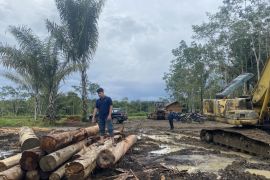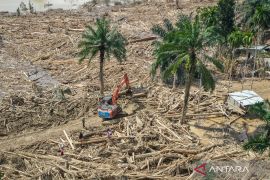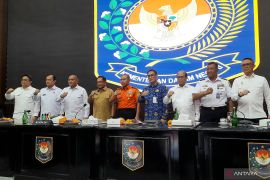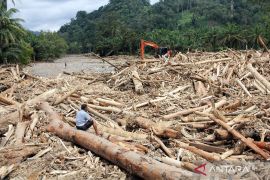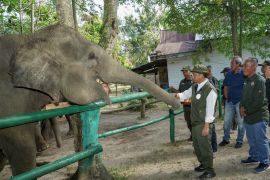The exploitation of the export quality timber on the island was strongly suspected to have been done by way of the sea because of the limited number of security personnel in the area, head of the Bengkulu natural resources conservation agency Sartono said Friday.
The illegal loggers on the island were strongly suspected to be using sea transportation as the forest police has found some evidence, but missed the perpetrators.
The security personnel fund cut trees and timber that had not been taken, while the timber is usually transported at night to avoid the police on Enggano Island.
"We have established coordination with the Navy and Police in the area to catch the illegal loggers," he said.
The forest police in the area will this year have speedboats for patrol along with the other security personnel in the area.
Most of the hunting forests and the nature preserve in the area is still in tact, but there was some worry that the illegal logging was carried out by way of the sea because of the choice of big trees.
The fall of one big tree may destroy scores of smaller trees around it, while it takes some time to restore the dead trees.
He said the protected forests in the area covered 8,735 hectares consisting of the Gunung Nanua hunting forest 7,271 hectares, nature preserve forest in Sungai Bahiwo 495.6 hectares, Teluk Keluwe nature preserve 331.23 hectares, Tanjung Laksanan nature preserve 333 hectares, and Kiyoa 1-II nature preserve forests 305 hectares.
Most of the timber growing in the hunting forests and natural preserve forests is for export purposes, and the area also has different kinds of rattan , rare animal species like hornbill and others.
The hunting forests also have hundreds of wild steers and wild boars, so that they are still in tact and protected, Supartono said.
Enggano Island has six villages, and a sub-district with a population of 4,000, many of them are fishermen or farmers, there are also coconuts, melinjo (Gnetum gnemon) and export quality cacao. (*)
Editor: Kunto Wibisono
Copyright © ANTARA 2011





